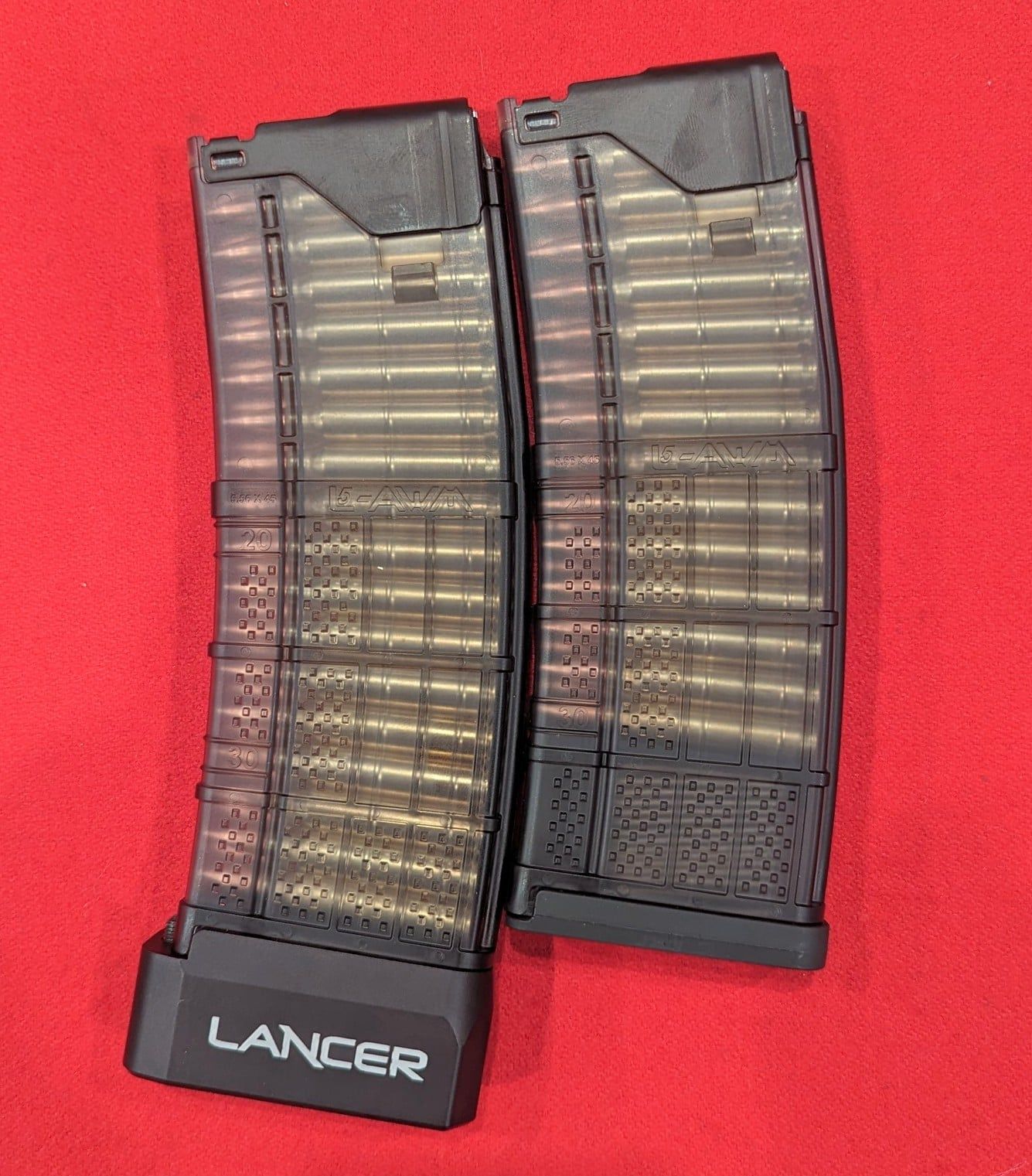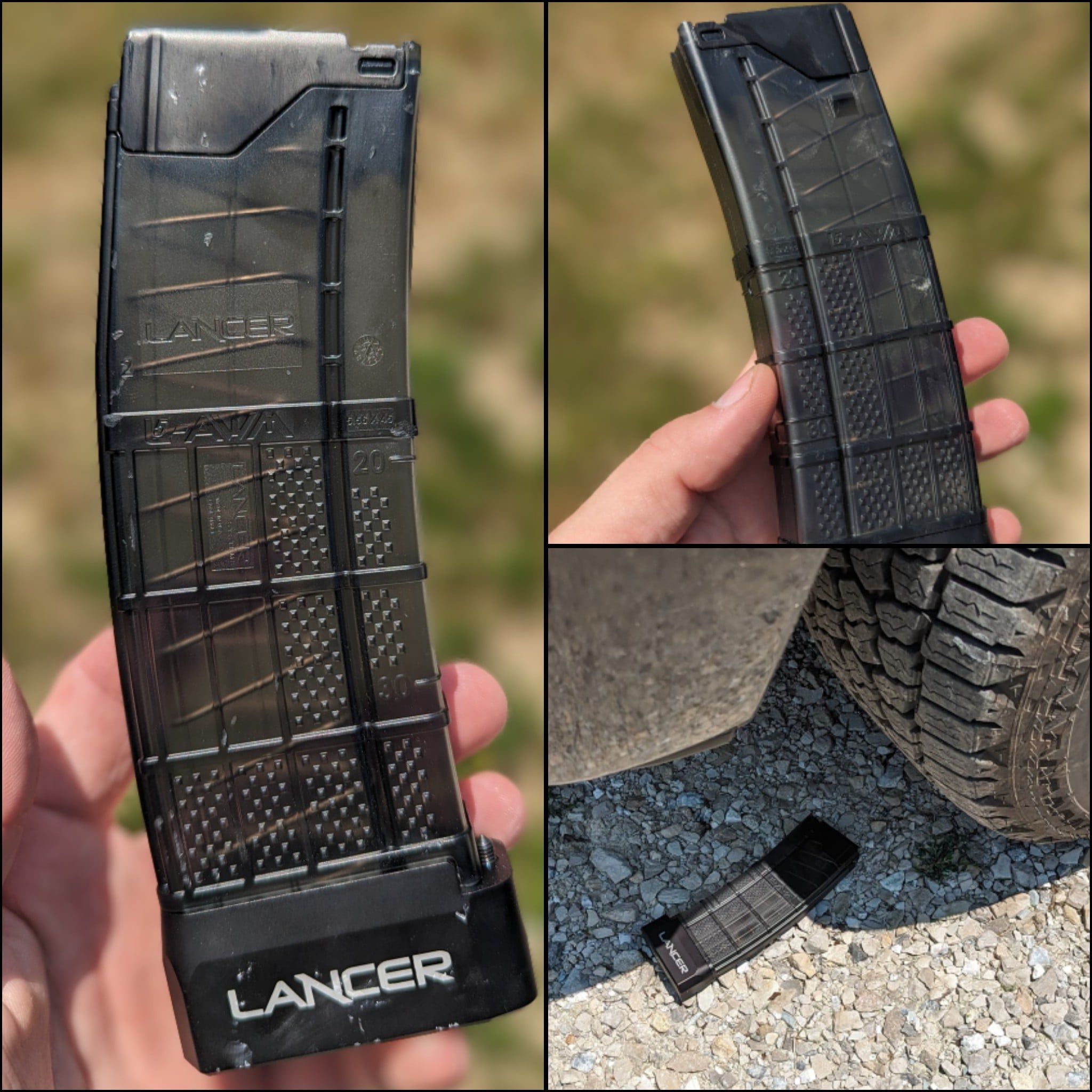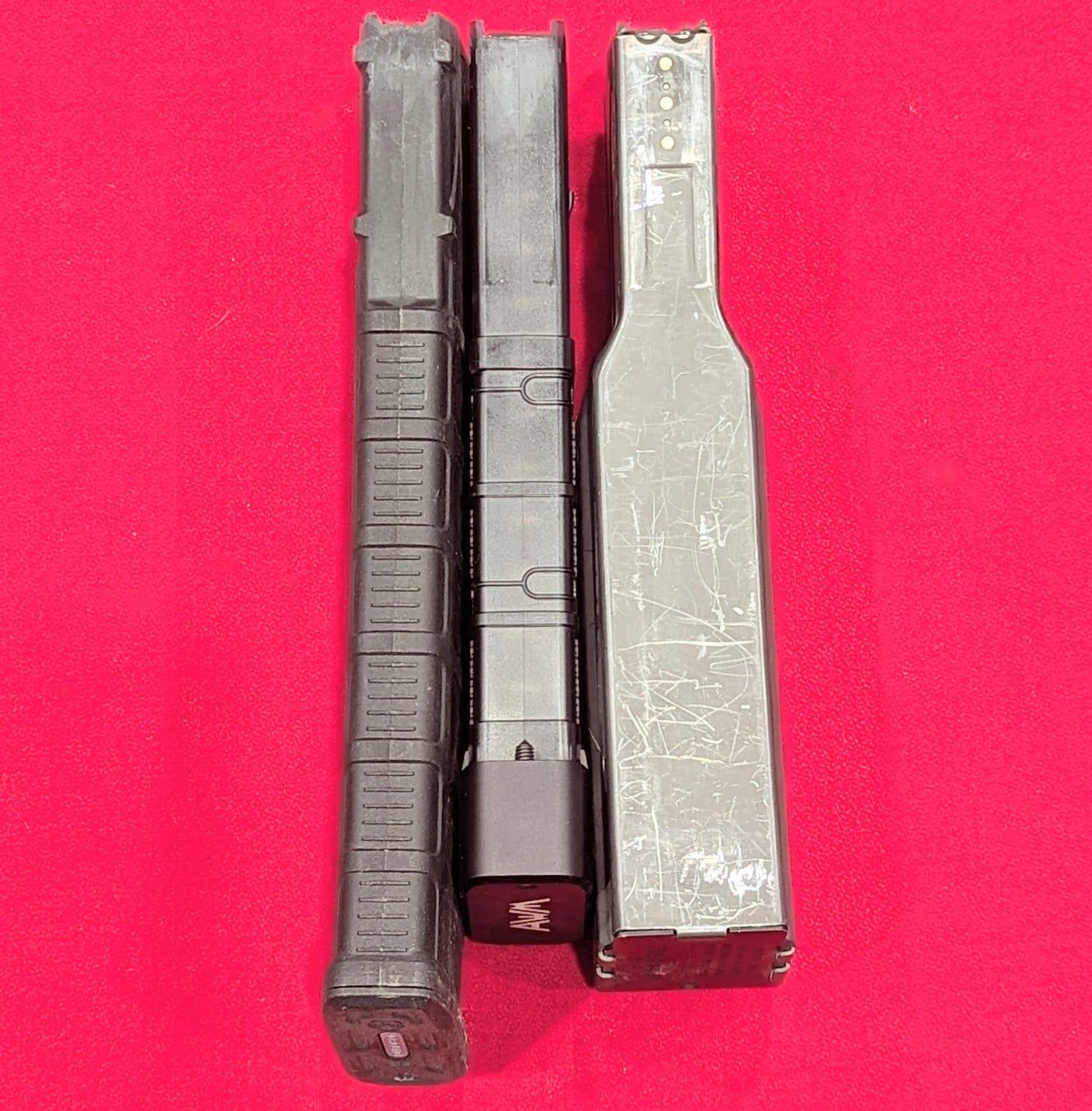I’ve run a plethora of AR-15 magazines over the years with varying degrees of reliability. The classic STANAG metal magazines were decent and increased substantially in quality with the introduction of anti-tilt followers. In the late 2000s, Magpul introduced the PMAG — arguably one of the first reliable polymer magazines ever manufactured for the AR-15. Since then, numerous companies have offered similar products with scattered degrees of quality. The Lancer L5 Warfighter magazine is undoubtedly a solid entry into the polymer magazine market.

I recently had the opportunity to run the L5 through some paces on the range with their Plus 6 magazine extension for the Warfighter. To say I was impressed and pleasantly surprised by the performance of the L6 with magazine extensions is an understatement. Naturally, I arrived at that conclusion after some careful review with a side of abuse to the magazines.
Durability
The Lancer L5 is a polymer magazine with steel feed lips. This design deviates from the classic design of most polymer magazines with polymer feed lips. I was hesitant about the reliability of this design at first due to the combination of polymer and metal combined to make a functional magazine. Lancer seems to have put some thought into this as the feed lips are nearly impossible to remove without intentionally destroying the magazine. The lips are inset into the polymer, reducing the possibility of catching or pulling from the polymer body. The front of the lips is held in place by polymer locking tabs and a steel lip. Despite pulling, prying, and dragging the lips across my equipment, wood, and gravel; I was unable to remove the steel feed lips from the polymer body or damage them.

I know some have genuine concerns about the durability of steel magazines and their feed lips — concerns that are not unfounded. However, I’ve experienced failures with polymer magazines over time with feed lips cracking or pieces of polymer splitting off — even on the tried-and-true PMAG. The issue at hand is the maintenance of your equipment and taking any damaged magazines out of service after routine inspection.
I went so far as to run over the magazines repeatedly with a full-size pickup truck. In an act of carelessness, I’ve done this with PMAGs in the past and merely dusted them off before putting them into a range day with no issues. The L5 was no different. I ran over the empty mags to reduce any support the ammunition may have on the body. I also did it with the Plus 6 extension on the magazine.

Minus some scrapes and gouges in the aluminum baseplates from the gravel, I had zero malfunctions over several hundred rounds. Durability doesn’t seem to be in question with the Lancer magazines. After all, Lancer, a subsidiary of Green, Tweed & Co, is no stranger to building products that must perform under heavy use. According to their website, they’ve been involved in aerospace technology and thermoplastics for over 50 years. After some digging, I determined if their products are good enough to be used on over 80% of aircraft, it’s probably good enough for a rifle.
Price
The biggest concern for many with magazines is the price versus quality. The Magpul Gen2 magazine sells for around $10 a magazine. The Lancer L5 is substantially higher at around $15. However, that is an apple-to-orange comparison. The L5 features a translucent body that allows the user to see the remaining rounds in the magazine complete with 20 and 30-round markers. For comparison, the Magpul Gen3 with ammunition window sells for around $14.
With a true comparison, the price gap between Magpul and Lancer closes to about $1. Nevertheless, consider that the Lancer is a single-piece design for the translucent body whereas the Magpul with window is two-piece construction. I have seen the window on Magpul magazines pop loose under heavy use, allowing dirt, moisture, and debris to enter into the magazine and potentially cause a malfunction.

While not a common issue nor one I’ve seen recently, it’s an additional potential failure point on the magazine and a major reason I don’t use their windowed magazines for duty use. Furthermore, the complete translucent body of the Lancer allowed me to always know the approximate round count of a magazine. Magpul unfortunately doesn’t offer the same advantage.
Lancer L5 Warfighter Plus 6 Extension
Most of my experience with aftermarket extended magazines stems from running Glock magazines with aftermarket extensions — with varying degrees of reliability. I’ve run Magpul 40-round magazines and the Surefire 60-round magazine with decent reliability. Nevertheless, the bulk and length of the magazines was complicated or impossible when used with a plate carrier. Surprisingly, the Lancer L5 with Plus 6 extension was shorter than a Surefire 60-round magazine. The addition of six rounds with a relatively minimal amount of increased size was practical and functional.

Earlier, I discussed the cost of the Lancer L5 compared to its Magpul counterpart. With the addition of the magazine capacity extension, the cost gap was substantially different — and in favor of the Lancer magazine. Currently, Magpul doesn’t offer an extension to increase the capacity of their magazines. The closest reputable magazine extension, manufactured by Taran Tactical, sells for over $40. The Lancer extension, an OEM addition, retails for around $24. Thus, a 36-round PMAG will cost the user around $54 while the Lancer counterpart comes in at less than $40 — a substantial difference in overall cost.
Functionality
With aftermarket magazine extensions, I’ve had issues with the follower catching as it progresses inside the magazine body. This was not the case with the L5 with a Plus 6 capacity extension. Furthermore, the installation was seamless and easy. I had the bases installed with the supplied Allen wrench in less than a couple of minutes and was ready to load up and begin range time.
If I had one complaint, it would be for the set screw that holds the base plate in place to be equipped with some Loctite or an overtravel stop. The set screw can be overtightened and protrude out of the base plate. I would recommend applying some form of Loctite to keep the screw from working loose during use — an issue I’ve had with other aftermarket base plate set screws in the past. Further use will determine if this concern is unfounded on my part. Thus far, no issues to report.

I ran the magazines under semi-automatic and fully automatic fire with the magazines loaded at capacity and with as little as two rounds. After nearly 300 rounds, the magazines had run without a single hiccup or malfunction. I ran the magazines in prone, using the magazine as a support, and experienced no malfunctions. In unconventional shooting positions such as rollover prone, the magazine spring still fed reliably with no observed or felt issues.
Overall, the Lancer L5 magazine, in conjunction with the Plus 6 magazine extension, is an impressive package that I look forward to using further on the range and potentially adopting for professional use. The combination of these two makes for a reliable, quality, and budget-conscious product for AR shooters looking to expand their magazine capacity.


